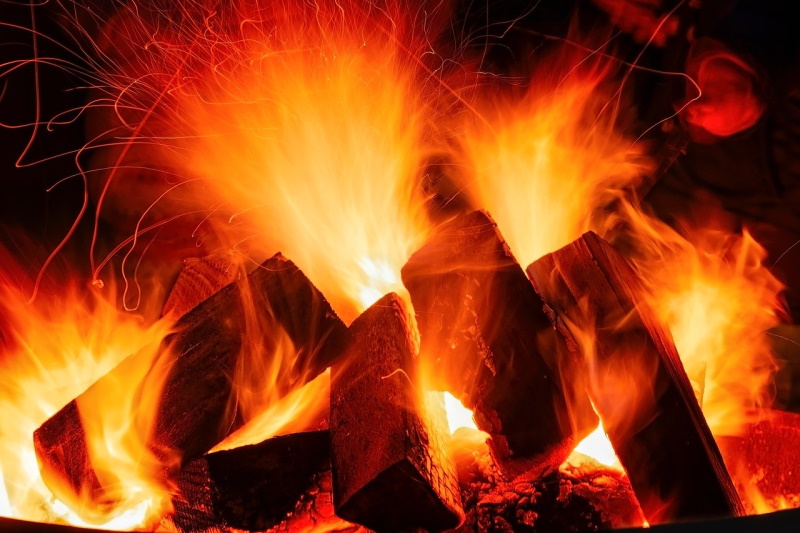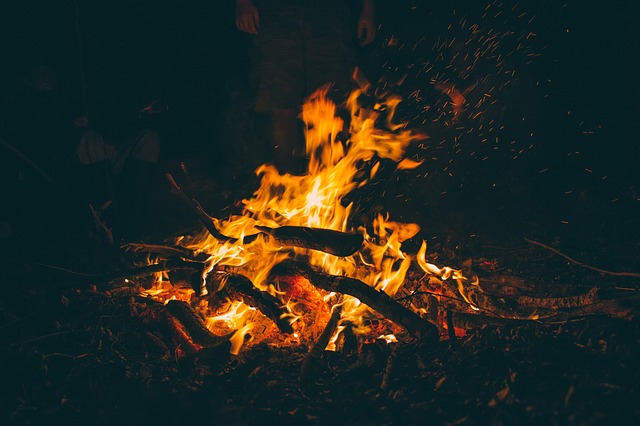Nothing compares to sitting around a crackling campfire, sharing stories with friends and family or reading your favorite book. Whether you need to cook food, keep warm, or just reflect on the day’s adventures, a camping trip is not complete without a roaring campfire. However, building a campfire is not as easy as throwing a few pieces of firewood together and igniting them. Instead, it’s an art that requires experience, skill, and patience. Besides, campfires can also cause wildfires, leading to the destruction of forests and other ecosystems. It’s, therefore, important to learn how to do it right. If you’ve never built a campfire before, here are the steps that you need to follow.
Identify the Site
Whether you are lighting a fire to keep warm, heat food or just create the perfect atmosphere for sharing campsite stories, it’s important to identify the right site. Just because you are out there in the wilderness, doesn’t mean that you can build a campfire anywhere. If you are camping on established campgrounds, you should only build a fire on designated spots such as fireplaces, grills or fire rings. Most established campgrounds have designated fire spots. It’s also wise to consult the campground operator, to ensure that campfires are allowed on the site. Campfires are prohibited on some campgrounds due to various reasons. If you will be car camping on undeveloped sites, then you should ensure that you check in advance with the administers of the land and enquire whether a campfire permit will be required. If you will be camping in the backcountry, it’s advisable to build a campfire on existing fire ring – to minimize environmental damage. You should only set up a new fire ring if there is none available or during an emergency situation. Just because a campsite has a fire ring doesn’t always mean that campfires are allowed. There might be some restrictions on the type of campfire that is allowed or how it’s supposed to be used or set up. Therefore, it’s always advisable to check in with the administers of the area prior to the trip.
Create a Fire Bed
If you are setting up a new fireplace, ensure you choose an area that is clear, away from bushes, trees, and overhanging branches. If possible, opt for an area with a natural windbreak. Avoid building a fire close to your tent or near a cliff face, or rock. Also, don’t light the fire in windy or dry conditions. Ideally, you should always ask yourself whether it’s appropriate or safe to light a fire on any spot. If you feel it’s appropriate and safe, then you can proceed to the next stage.
Your fire bed should not be on grass or leaves. Instead, it should be on exposed earth. In case you can’t find a spot like these, then you can create one by clearing the leaves and the grass. Alternatively, you can create a mound fire, where you lay a piece of cloth on the surface, and the place mineral soil on top of it, for about four inches high. It’s always a good practice to surround the fire using a ring of rocks. The rocks will help to contain it in case there is a wind storm. Ensure you always have water around to put out the fire, in case a spark leaves the fire area.
Gather the Firewood
Now that you have already established a spot for your campfire, it’s time to gather firewood that you will use. It goes without saying that you will need extremely dry wood for the campfire. Avoid wet or green wood, since it will not burn well. Besides, it will produce too much smoke, thus making the campfire ambiance unbearable. To set up a successful campfire, you will need 3 main types of wood – tinder, kindling, and fuel.
Tinder should include things like dry leaves, wood shavings, bark, forest duff or pine needles. Any of these materials can work well for the tinder. Most campers carry their own tinder. The kindling, on the other hand, should include small sticks that are not more than one inch around. They should be pencil-thick or even smaller. Just like the tinder, the kindling should be as dry as possible. If it’s wet, then you will encounter some problems when trying to light the fire. For the firewood, you can collect large pieces of wood. They should be the size of your wrists or forearms. Firewood is basically the fuel of your campfire. It’s, therefore, important to collect the right wood.
If you are camping on an established campground, then you should only use local firewood. Firewood is readily available in local stores. Some campgrounds also sell firewood. In some campgrounds, you might not be allowed to bring your own firewood, since it might introduce harmful pathogens into that forest. Make sure you call the local ranger office or the campground supervisor to consult about the issue of firewood before your trip. On the other hand, if you will be camping in the backcountry, then you will definitely have to gather your own firewood. When collecting firewood, only gather downed or dead wood. Never harvest wood from standing trees.
Lay the Fire
Now that you have a good supply of firewood, it’s time to lay the fire. There are various ways of laying a campfire. The different types provide different cooking potential, heat output as well as the length of burn. There are campfire types that you can set up. They include:
- Cone or teepee: Just like its name suggests, this type of campfire resembles a cone. It has a circular base, featuring a wide diameter. Its shape is designed to allow in as much oxygen as possible. To build this fire, you first need to lay down a bundle of tinder, and then add small pieces of kindling gradually, to form a corn shape. You will then add the larger pieces of wood as the fire grows. One of the main benefits of this type of fire is its easy setup and maintenance. Since it burns through firewood quite fast, this type of campfire is mainly used for small cooking tasks like warming food or boiling water.
- Log cabin: If you want to build a fire that is easy to maintain and it will last long, then you should try the log-cabin style. To build the log-cabin campfire, you will first place two pieces of wood on the ground, running parallel to each other. You will then stack two additional pieces on top, running perpendicular to those on the ground. You then need to repeat this arrangement until you’ve achieved your desired height. After that, you should place both the kindling and the tinder in the center space and then ignite the fire. Ensure you use the larger pieces of wood at the bottom and then add the thinner pieces as you approach the top. The log-cabin type of fire tends to burn slower than the cone-shaped fire, making it perfect for those evenings when you want to spend some more time around the campfire – reading a novel or sharing stories with your friends.
- Lean-to: Trying to start a fire when camping in breezy conditions or in areas with high winds can be extremely challenging. Fortunately, a lean-to fire can help you to overcome this challenge. To build a lean-to fire, you simply need to place a large log on the ground, and then lean your kindling against it, so that it provides cover for the tinder. The kindling should form a tent-like structure. You will then need to add larger pieces of wood, and then ignite the fire.
- Upside-down pyramid: Also known as platform, this type of fire is also designed for cooking food just like the log-cabin type. But unlike the log-cabin type, the logs of wood in the platform type are usually placed closer together. Also, you will start your fire at the top, as opposed to the bottom, which is normally the case with the log-cabin type. As the fire burns, it will create a platform of hot coals, which you can then use to cook your food. Even if you set pans or pots directly on the platform, the fire will still sustain itself.
As you can see, you have numerous options when it comes to laying up a campfire. If you want to use the fire to cook heavier meals, then the upside-down pyramid and the log-cabin types will be perfect. On the other hand, if you simply want to use the fire for lighter cooking tasks or you simply want to keep yourself warm, then you should opt for the teepee type. Regardless of the type of fire that you choose to set up, make sure you burn the embers completely.
Extinguish the Fire and Clear the Site
Once you’ve finished with the fire, you need to extinguish it. Putting out the fire might take longer than you think. It’s always advisable to check in with the campground supervisors or local land managers, and then follow their recommendations pertaining to extinguishing a fire in forest parks. But generally, you should extinguish your campfire by sprinkling water on it, until you are sure that all the embers are out. Using sand or dirt to put out a campfire is not advisable since it can insulate some coals, which might later ignite and cause a wildfire. Before you leave the site, touch all the ashes and check whether there might be some ignited coals hidden beneath. If you are satisfied that the fire is completely extinguished, you should then dispose of the ash, following the recommendations of the local land managers. Happy camping!




0 comments